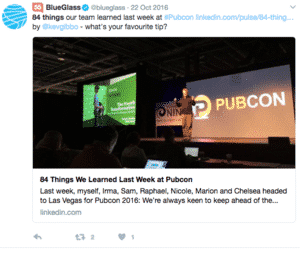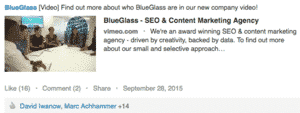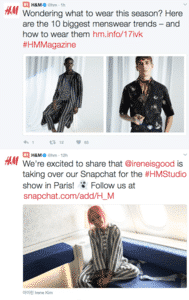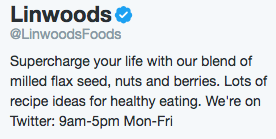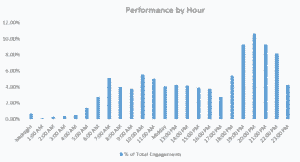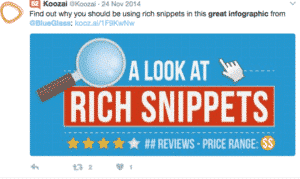Here at Re:signal, we really love social media. It’s enabled us to grow our agency, expand our network and showcase what we do every day to the wider public. However, during this modern era of regular, fast change, there are plenty of ways to improve the content that’s published on social media and the ways it can be reached. That’s why we’ve spent time researching effective tips on how to improve our social media content, and we want to share these with you too.
1) Boost your credibility
By posting content that illustrates your successes, achievements and press-worthiness, it enables you to boost your brand’s credibility online and helps to establish the brand as thought, service, or product leaders within a specific industry to the public on social media.
Accompanied by a related hashtag, this content gets recognised by other industry professionals, who may then also join in the engagement.
We do this regularly here at Re:signal, and this receives engagement and comments of congratulations, which we always love to see!
This is an important method of improving your social media content, because by boosting credibility, you’re boosting your reputation online. The Social Media Marketing Industry Report 2016 found that 90% of marketers believed social media was important for their business. It’s therefore more important than ever to be trusted in a competitive environment.
2) Invite conversation
Another way to improve your social media content is by being interactive with your audience and inviting them to converse with your brand.
Bhavin Parikh of Magoosh Inc. explains that the strongest form of content is one that directly addresses the audience to engage with the brand: “Many entrepreneurs use social media as a one-way platform to spread a message to those who follow them; however, the best will engage in conversations with their followers, responding to comments and being truly accessible”. So, it may be a good option to ask your followers how their day is going now and then.
3) Know and target your audience
With different audiences using different social platforms, it’s incredibly important to research where your target audience spends their time on the web before you put together a social media strategy.
For example, a new retail study by Eptica found that UK retailers answered 59% of customer queries on Facebook, 55% via email, and only 45% on Twitter. This suggests that if you’re a retailer, your customers will be aiming to reach you predominantly on Facebook and through a personalised email account, which should be the primary focus of your social media strategy.
Using Re:signal as an example, as a B2B SEO agency, the most impressions and engagements occur for us on LinkedIn, which means we’ll use LinkedIn as the priority social platform when sharing content.
Spend some time observing what content gets the most engagement and what groups of people are engaging – you can then target all your future content at them.
4) Share curated content
By just promoting your own brand or business, your followers will eventually start to find your page dull, weakening your brand reputation. Therefore, it’s important to engage with other members and experts in your industry on social media by sharing their content with your followers.
Chances are, your followers follow you for the brand and industry you represent. By re-tweeting and quote-tweeting on Twitter, sharing on Facebook, and sharing on LinkedIn, it keeps your audience engaged with content they want to see, but it isn’t all just predictable advertising for your brand.
Guy Kawasaki, the author of a new book called The Art of Social Media: Power Tips for Power Users, has spent many years using and analysing social media, particularly for entrepreneurs, and believes that sharing others’ content is one of the best ways to increase your own social presence.
In addition, doing this can boost your online reputation for both sharing another piece of content from another member within your industry (thus building a potential relationship) and for being helpful/enlightening to your audience, who’ll then perceive your account as positive and necessary to follow.
5) Have clear calls to action
Request people directly to:
- Share your posts
- Like your posts
- Follow you
This engagement technique is relevant and can be applied across all social platforms. If you’re a B2B company primarily focused on LinkedIn, tell your network to engage in a particular conversation with you. If you’re a fashion brand on Twitter, you could post there asking people to send you pictures of them in their favourite seasonal outfits.
Researching 1.2 million posts from the top 10,000 most-liked Facebook pages, Dan Zarrella specifically examined those that included the words ‘like’, ‘comment’, or ‘share’. He found these posts tended to gather more of the specific action they referenced compared to posts without those words.
6) Use visuals
For arts, fashion and food, visuals are an important part of the marketing mix, which makes Instagram and Pinterest perfect for creative industries like these. Similar to targeting, it’s also about the best form of content for your brand. A long post on LinkedIn won’t be as well-received for a fashion brand as a picture of an outfit related to a current trend, which would appeal to a mass audience and not just a professional network.
A recent report on New York Fashion Week by digital think tank L2 found that Instagram drove the most engagements (likes, comments, and shares) on social media. Of the 13 million total interactions during NYFW Fall 2016, 97% took place on Instagram, with 2% on Facebook and 1% on Twitter.
So, if you’re in the creative industries, use visual-led social media platforms to your benefit.
7) Set a time for posting content
Create a schedule relevant to your goals. Scheduling is key to high engagement and keeping things on track. For example, retailers typically answer all customer queries between 9am and 5pm (as a normal working day), so people know exactly when to look out for their content.
Similarly, a B2B company is better for posting in the evening.
*LinkedIn hourly performance
This graph shows that posting content on LinkedIn receives more engagement between 7pm and 10pm. Thus, by setting a fixed schedule for your posts based on industry and social platform, you can reach a larger audience and aim to achieve more engagement.
8) Use infographics
Infographics are a great way to tell a story about a brand’s journey, tease upcoming content and reports, and present industry facts – pretty much anything quantifiable. You can post sections of infographics in Instagram posts, or even link people that follow you on Twitter to the infographic page. It’s a great way to cross-promote your social platforms.
Researchers found that coloured visuals increase people’s willingness to read a piece of content by 80%. However, if a relevant image is paired with that same information, people end up retaining 65% of the information three days later.
The team here at Re:signal create infographics on a regular basis. We love them!
Stay up to date with Re:signal’s social media activities on LinkedIn, Twitter and Facebook.


